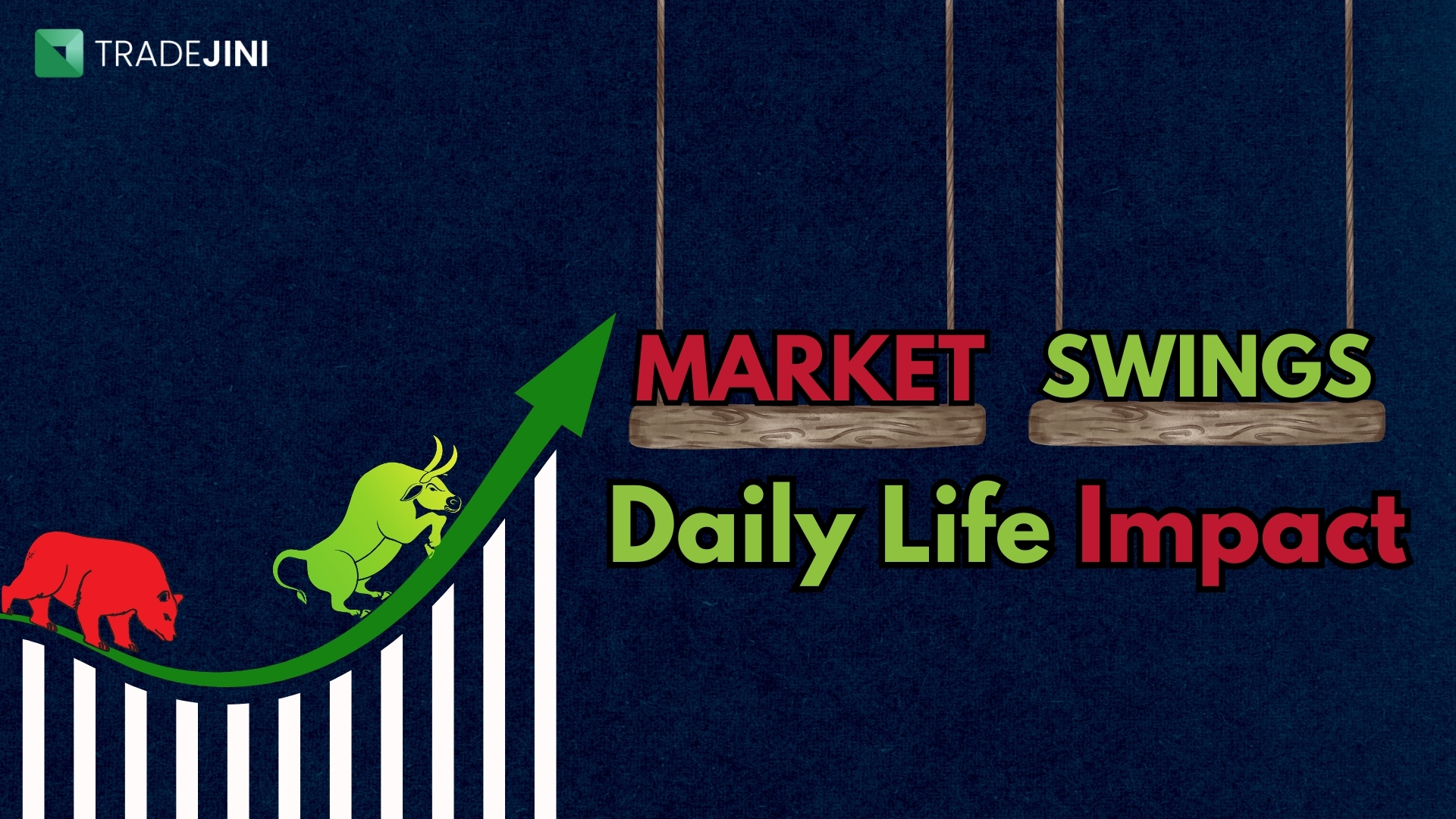For seasoned traders who engage with the stock markets daily, sentiment is often the primary driver of market dynamics. It might be tempting to attribute a heightened sensitivity to sentiment in the Indian market to the cultural disposition towards emotionality, but is this perspective universally applicable?
Factors impacting the stock market
Traders or even investors in general, consider historical trends to understand the performance of a particular stock. These trends could be long-term or short-term fluctuations. Four major factors cause either of these.
The Government
Do you remember how well the market performed when the BJP government came with a full majority for the second time in 2019?
This isn’t a political statement to make about the party in question but the full majority is the point of focus. You see, a full majority means that the government is going to be stable. A stable government means more decisive sessions and, hence, the expectation of having better laws in place to ease business.
You see, governments hold much sway over the free markets. The fiscal and monetary policies, their outlook on interest rates, and their previous fiscal performances as well- all of these define the market reactions. The probable intensity of the impact also tends to define the performance of sectoral stocks. For instance, if a government has the propensity to spend more on defence, related stocks would go up. If the government has a higher probability or even track record of spending more on education or infrastructure development, then the related stocks will tend to perform better, and so on.
International transactions
International transactions also impact the stock markets. For instance, the balance of payments between countries and the general economic strength may not have an impact daily but play a major role in longer-term trends.
Talks about FDI, especially in the Indian context, have usually been the measure of the economy’s performance for decades now. The higher the FDI, the stronger the economy or the growth trends; the lower it is, the more pressure there is on currencies and markets. Countries that predominantly export either goods or services are considered to have stronger markets.
However, it isn’t as simple as it sounds. For example, according to World Bank data from 2021, India's economy ranked fifth globally in terms of GDP, 12th globally in terms of exports, and 11th globally in terms of imports. While the imports have been categorically higher, the gap between exports and imports has been gradually decreasing.
Now all this seems too simple, right?
Yes, but we cannot be far from being incorrect. There is another index to consider when we are talking about economic performance and that is the ECI or Economic Complexity Index.
Speculations and expectations
Another factor that impacts stocks is purely human emotion. Everyone has a different perspective on the state of the economy and its future, including politicians, investors, consumers, and businesspeople. Sentiment indicators are commonly used to gauge how certain groups feel about the present and the future. These, along with the fundamental and technical analysis, help create expectations of future price rates and trends.
The decisions traders and investors make, influenced by their interpretation of government policies and international dealings, fuel speculation about future price movements. If a consensus forms around a particular direction, the market can embark on a trend that might last for several years.
Moreover, people whose initial analyses were off-target can reinforce trends. As these participants exit their unsuccessful positions, they inadvertently propel prices further along the established path. The influx of additional investors looking to capitalize on the trend can eventually lead the market to a saturation point, prompting a temporary reversal of the trend.
Government economic reports are pivotal, reflecting the economy's condition, consumer health, and the performance of crucial industries. Similarly, a company's quarterly financial statements provide insights into its recent performance and may hint at prospects.
However, traders are often more interested in current trends, such as emerging product demands or fading market trends. Business news frequently mentions whether a company's revenues or sales have reached, exceeded, or fallen short of the anticipated whisper number, essentially industry rumours that blend verified information with speculation.
Demand and supply
Supply and demand for products, services, currencies, and other commodities create a push-pull dynamic in prices. This is simple economics- if something is in demand and the supply starts to shrink, then the prices will increase. If the supply is greater than the demand, then prices will fall. This factor, however, gets more relevant when people are selling or purchasing stocks based on the three factors mentioned above.
In markets like commodities, where the supply is linked to a tangible product, the dynamics of supply and demand are constantly in flux, influencing the price participants are willing to pay for oil now and in the future. When supply decreases or demand surges, oil prices may steadily climb as buyers compete for a limited resource, driving up the price due to heightened demand and suppliers seeking higher returns.
This principle also applies to financial markets, where stocks vary over both short and long terms, shaping market trends. The potential for stock supply to diminish at prevailing prices compels purchasers to offer progressively higher bids, leading to significant price hikes. Conversely, if a substantial number of sellers were to enter the market, the increased stock availability could drive prices down. This pattern is observable across various timeframes.
Other factors
Rising interest rates and taxes can discourage spending, leading to a decrease or a prolonged drop in market values. In the immediate aftermath, such news can trigger significant fluctuations in prices as traders and investors react to the updates. The surge in activity surrounding these announcements can lead to temporary market trends, whereas more sustained trends might emerge as investors fully understand and integrate the implications of this information on the markets.
Positive vs. negative news impact
Typically, adverse news leads to a sell-off in the stock-market. Poor earnings results, governance issues, broad economic and political uncertainties, and unfortunate events generally result in selling pressure, causing a drop in the prices of many stocks. Conversely, traders focus not on reacting to news but on predicting it to stay ahead.
On the flip side, positive developments encourage stock buying. Strong earnings, new product launches, corporate acquisitions, and favourable economic data all generate buying momentum, pushing stock prices up.
When bad news turns good
Interestingly, what's negative for some stocks can be positive for others. India, with its significant dependency on agriculture, sees the monsoon season as a critical period that can significantly influence economic and market sentiments.
For instance, a forecast of an above-average monsoon can lead to a decline in agricultural commodity stocks due to the expectation of a bumper crop, which might lower prices for these commodities.
However, this same forecast can positively impact the stocks of companies in agriculture-related sectors, such as fertilizer and irrigation system providers, anticipating increased sales as farmers prepare for a fruitful growing season.
Similarly, a forecast of deficient rainfall might depress the stocks of companies in the agriculture sector due to anticipated lower crop yields and increased costs due to the need for irrigation. Yet, it could boost the stocks of water management and irrigation companies as the demand for their products and services increases to mitigate the effects of lower rainfall.
In both scenarios, professional traders in the Indian stock market would analyze meteorological reports, government agricultural policies, and historical market data related to monsoon patterns to predict these outcomes and adjust their trading strategies accordingly.
Element of surprise
Considering the dynamics of the Indian stock market, several events have historically impacted stocks, showcasing the market's sensitivity to unforeseen developments
Demonetization Announcement (November 2016): The Indian government's sudden announcement to demonetize high-value currency notes (₹500 and ₹1000) as a move against black money caused significant market turmoil. Banking and financial services stocks initially faced a downturn due to panic and uncertainty among investors. However, digital payment and fintech companies like Paytm (parent company One97 Communications Ltd, listed much later after the event) saw a surge in user base and transactions, reflecting positive sentiment towards these sectors in the longer term.
COVID-19 Pandemic Impact (Early 2020): The outbreak of the COVID-19 pandemic and subsequent lockdowns led to a massive sell-off in March 2020, with the Sensex and Nifty experiencing significant drops. Sectors like aviation, hospitality, and retail were severely hit. Conversely, pharmaceuticals and IT services stocks, such as Dr. Reddy's Laboratories, Cipla, TCS, and Infosys, saw an uptick due to increased demand for healthcare products and digital services.
India-Pakistan Border Tensions (February 2019): Geopolitical tensions between India and Pakistan, especially following the Pulwama attack and subsequent air strikes, led to volatility in the Indian stock market. Defence-related stocks, however, such as Bharat Electronics Limited (BEL) and Hindustan Aeronautics Limited (HAL), often see increased investor interest during such times due to the anticipation of higher defence spending.
GST Implementation (July 2017): The implementation of the Goods and Services Tax (GST) was a significant reform that aimed to unify the Indian market. While it created short-term uncertainty and adjustment challenges for businesses, stocks of companies in logistics, like Blue Dart and Gati, benefited in the long term from the simplified tax structure, leading to more efficient cross-state transportation and logistics operations.
Lessons to be learned
For traders and investors, the lesson is two-fold. First, staying informed and agile is crucial, allowing them to pivot strategies in response to the latest developments. Second, understanding the broader context within which these changes occur is essential. By embracing a holistic approach to market analysis that incorporates an awareness of the factors driving market sentiment and trends, market participants can navigate the volatile nature of stock trading with greater confidence and insight.
While the stock market may seem complex, it is not entirely inscrutable. Through diligent analysis, a thorough understanding of the factors at play, and a strategic approach to trading and investment, it is possible to navigate and thrive within the ever-changing landscape of the stock market.
‘Therefore, trade smarter, not harder’



